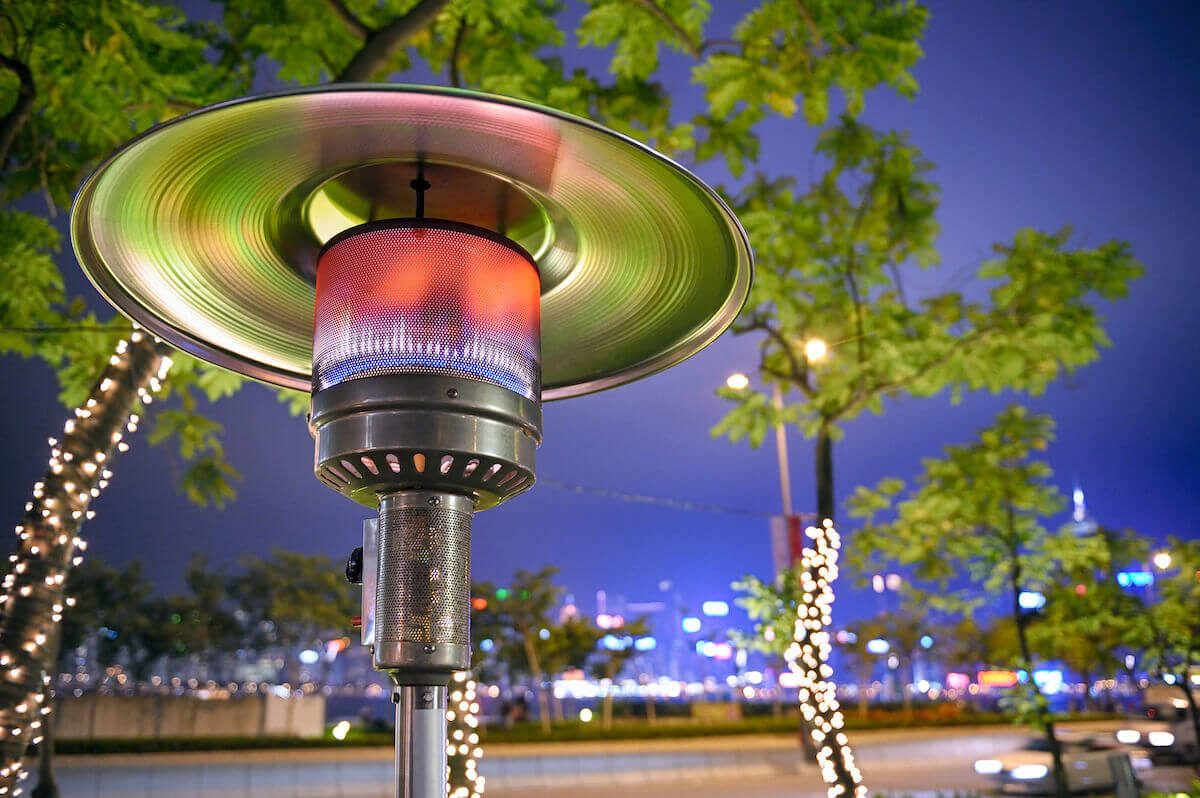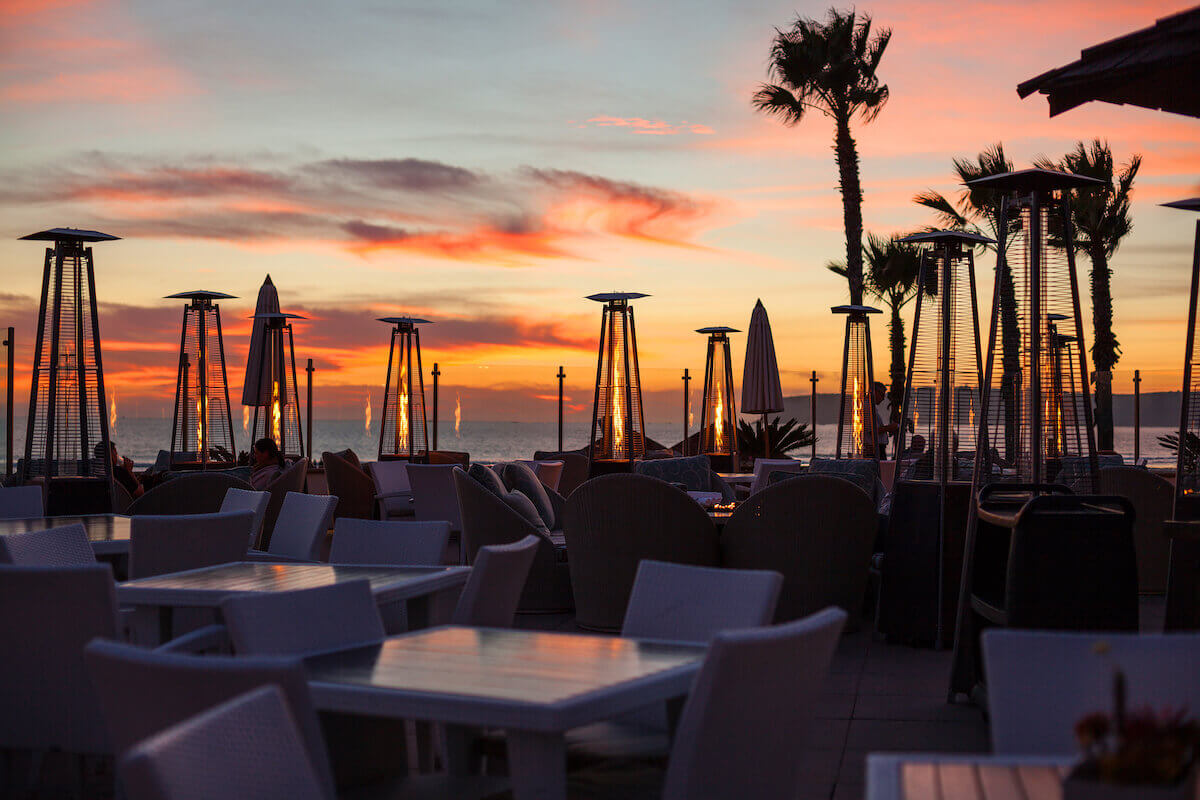How to keep customers warm during winter outdoor dining
Outdoor dining can be a wonderful experience—or it can be an uncomfortable mess, depending on how it’s done. Nothing’s worse than settling down on a patio only to be faced with a chilling breeze or rain leaking through the awning. Keep the cold away, and diners (not to mention your waitstaff) will have a pleasant experience. The warmer customers are during winter outdoor dining, the happier they’ll be.
There are tons of options to keep al fresco dining from becoming al freezing. And with many more restaurants offering outdoor dining options than ever before, nailing this part of your business can help you serve more diners and boost revenue.
So whether you’re running a food truck, a restaurant with an outdoor patio, or any other sort of eatery, check out these ways to keep your outdoor seating area viable, your customers toasty, and your comfort food piping hot.
Pick the best outdoor heaters

Hot stew near a heater or fire? Brilliant. Cold stew in the snow? No, thanks. Offer a cozy spot to warm up, and diners looking for an outdoor space will flock.
Patio heaters
Your first step is securing great patio heaters—the vertical ones with the heating element at the top and a heat shield to direct the heat downwards. They’re reasonably effective for creating a heated patio, especially in mild, un-windy temperatures. They’re an excellent choice for restaurants at lower latitudes that don’t typically get hit by blizzards or for restaurants in northern latitudes that are just having a bit of cool weather.
Patio heaters cost somewhere around a few hundred dollars and will pay back the initial investment many times over. You’ll need to look for ones with high BTU ratings: Somewhere in the 30,000-40,000 BTU range will keep diners toasty and comfortable. They rely on propane, which will need to be filled regularly.
Propane firepits
Propane firepits are often a good choice as well for outdoor dining. They produce a good amount of heat and have a reliable and cheap heating mechanism, like patio heaters. A firepit also provides a friendly atmosphere, as there’s something innately comforting about a roaring fire nearby in the winter. While they don’t have the same effect as a wood fire, they also don’t produce smoke, and you don’t need to buy or chop lots of firewood.
Similarly, restaurants can opt for a tabletop fireplace—again, propane-heated—to keep both diners and dinners warm. Combining one of these tabletop fireplaces with a patio heater or a nearby firepit for a double whammy of warmth and atmosphere can make your customers just that much more comfortable.
Heat lamps
Infrared heat lamps are also a viable option and don’t rely on combustibles like propane to produce their heat. While they don’t quite have the je ne sais quoi of a real fire, they provide warmth, often at multiple levels. Their convenience and safety are their biggest selling point, as well as their utility for semi-enclosed structures—which brings us to our next point.
Build semi-enclosed and enclosed structures

To keep diners warm, you can build structures such as greenhouses, igloos, or other out-posts if you have enough outdoor space.
Greenhouses
Greenhouses are pretty self-explanatory: They’re structures designed to keep out wind and keep heat indoors. You can use the same materials used to build a gardening greenhouse for your outdoor greenhouse.
Igloos or Yurts
Dining igloos resemble geodesic domes, and, in fact, many actually are geodesic domes. Not only do they add a bit of flair to winter dining and make your restaurant look chic, they essentially give customers a private dining room, adding to the atmosphere and providing privacy.
Heated igloos are also in style, so if you’re in an area where trends matter, like New York, they can be an excellent option.
Yurts function in the same way. They’re a round structure made of timber and insulating fabric like thick canvas. When the cold weather passes, the canvas can often be rolled up on the sides to make for a semi-enclosed space, so these are versatile all-season structures.
A word on safety
Enclosed and semi-enclosed structures will require non-combustible sources of heat, like infrared heaters. As you may know, combustion produces carbon monoxide. Carbon monoxide is harmless in open-air or otherwise well-ventilated areas, but it’s an absolute no-go in enclosed spaces as it’s potentially deadly. A yurt with an open top can help relieve this problem, but it’s still probably best to use electric heating sources rather than combustion.
Base your choices on your type of restaurant
Just what kind of outdoor structure you build for your customers depends on the dining experience you want to offer. The best outdoor dining option will be the one that fits best with your restaurant’s style.
A brewery could do any of the above and pair warm, wintry craft beers that complement and enhance the beer garden experience. A dark ale to pair with a hearty stew, fondue, or rich curry while sitting in a cozy structure during cold weather appeals to a very wide customer base.
Who wants cold tacos? Warm food helps sell more drinks, like margaritas or wine, which helps to drive up profit margins.
Brief note: A Korean restaurant could opt for traditional Korean heating, provided by hot water piped under the floor. That’s a significant investment, and should only be considered if you’re building from the ground up, but it works quite well.
Create the right atmosphere

Overall, heating and seating leads to one end: a comfortable and cozy dining atmosphere that will keep customers coming back. Decorating your igloo, greenhouse, or yurt can further add to that atmosphere to give diners something truly unique. Best of all, it’ll encourage diners to enjoy their meal at your restaurant rather than ordering takeout—which gives you the chance to upsell on drinks, desserts, and appetizers. Everyone wins, really.
Deciding between open-air heat and enclosed heat, however, depends on your venue. A location that’s well known for live music and intends to keep playing through the winter, for example, will do better with outdoor winter heating elements. Restaurants that don’t focus on live music and have space to build enclosed structures should do so, especially in locations that experience long and cold winters. Whatever the case, the goal is to not lose your valuable patio seating simply because the sun is busy heating the Earth’s other hemisphere.
Attract more diners with Yelp for Restaurants
Whatever option you decide to go with, Yelp for Restaurants can help you grow and maintain a customer base through the winter months and beyond. As life begins to return to some degree of normalcy after the pandemic, customers are itching to get out of the house, make a reservation, and enjoy some quality dining moments. Using all of the tools at your disposal will help attract customers and make up for lost revenue.
Yelp’s FOH system helps keep track of diner tendencies—including favorite menu items and birthdays—and lets owners really dive into the data they get when serving customers. On top of that, Yelp Kiosk can help relieve pressure from understaffed restaurants by automating check-in and seating processes.
Want to know how else Yelp can help? Reach out for a full demo of their software suite to see how it can work for you.